A handful of promotions earlier this season have shuffled the top of my rankings, which now feature five players signed as international (July 2nd) free agents in the first five slots. The list also skews quite young, with teenagers constituting more than 20% of the players here. Players are only eligible for this ranking if they still have rookie status and are not on a major league roster or disabled list as of this writing.
Law's preseason top 100 prospects | Team-by-team draft recaps: AL | NL
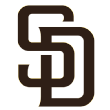 1. Fernando Tatis Jr., SS, San Diego Padres
1. Fernando Tatis Jr., SS, San Diego Padres
I know, he's not the guy you expected here, and he's not the most famous prospect in the minors right now, but he is the best prospect still in the minors.
Tatis is now 19, raking in Double-A, showing strong plate discipline along with plus raw power, at least a 70 arm, plus speed, tremendous instincts, and quick hands on both sides of the ball -- even when it comes to the transfer on double plays or how well he tags runners. He did have a rough April, having skipped high-A entirely, but from May 1 until he left for the Futures Game, he hit .333/.406/.577, and his home park in San Antonio is not a good place for power.
He could still outgrow shortstop, but right now he looks like a plus defender there, and he'll be easily plus or better if he has to move to third. If you don't see a high-impact player here, you need to look again.
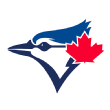 2. Vladimir Guerrero Jr., 3B, Toronto Blue Jays
2. Vladimir Guerrero Jr., 3B, Toronto Blue Jays
Guerrero's bat belongs in the big leagues and it's the best in the minors, bar none. It's an 80 hit tool, and because he's so strong and his hands are so quick, it's 80 power, too. If you're a fantasy player, and you want to know who the best prospect is, it's Guerrero. But position and defense matter, and Guerrero is not a third baseman in anything but name right now. He's enormous for the position, and at 19, he's more likely to get bigger than smaller. He has a tremendous arm, and his hands are fine, but he's not mobile or agile enough for anything on the dirt other than first base. I'd try him in right field first, but he's going to play somewhere at the wrong end of the defensive spectrum, and might not be good anywhere. And there's a real concern about how big he'll be even in his late 20s, given how his body is already changing for the worse.
That's all merely my way of explaining why he's No. 2 and not No. 1 on this list. He might still hit like Miguel Cabrera, a defensive nonentity who got big young and still hit like a star until age 34, and nobody will begrudge Baby Vlad those last few pounds.
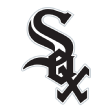 3. Eloy Jimenez, OF, Chicago White Sox
3. Eloy Jimenez, OF, Chicago White Sox
Jimenez continues to hit for average and power while showing an extremely advanced and patient approach at the plate. He's doing this now in Triple-A at age 21 while playing primarily left field as he has gotten bigger and maybe lost a half-grade of range in the process. He might not be a defensive asset as he fills out, but he looks very much like a middle-of-the-order bat who'll hit 30 bombs with a high OBP and should be in the White Sox lineup on Opening Day next season.
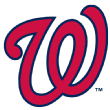 4. Victor Robles, OF, Washington Nationals
4. Victor Robles, OF, Washington Nationals
Robles is the Tahani Al-Jamil of prospects. Just when it appeared he was about to get his moment in the sun, he injured his elbow when a statue of fellow Nats outfield prospect Juan Soto fell on him*, and he missed three months before returning for a rehab assignment in early July. (*Note: No statues were actually involved in Robles' injury.)
Robles is a true center fielder with plus-plus speed, a good eye at the plate, and at least the potential to hit for above-average power. The hyperextended left elbow shouldn't have long-term effects on his career, although it probably cost Robles close to a year of major league service and a few hundred at-bats of development. If the Nats lose Bryce Harper to free agency, however, they wouldn't be in bad shape with Robles and Soto in their 2019 outfield.
 5. Francisco Mejia, C, Cleveland Indians
5. Francisco Mejia, C, Cleveland Indians
Editor's note: Mejia was traded to the San Diego Padres on Thursday, July 19.
Mejia is stuck in neutral a little bit, partly because there's no place for him to play in Cleveland right now with Yan Gomes entrenched at catcher and no other clear spot Mejia can play, and partly because Mejia got off to a terrible start this year. He hit under .200 through the end of May, then went 45-for-99 in June (.455/.476/.717) to just sort of remind everyone he was still good.
I do think Mejia is someone's regular at catcher, where he has a plus arm and fringy receiving/other skills but could hit enough that someone moves him to third base or another position just to get him in the lineup 150 times a year. Whether that's in Cleveland or elsewhere remains to be seen.
 6. MacKenzie Gore, LHP, San Diego Padres
6. MacKenzie Gore, LHP, San Diego Padres
Gore missed a month because of a blister on his throwing hand, came back for two short outings, then missed another month before coming back for good, with his best start of the year coming Sunday: 10 strikeouts in five innings.
He works in the mid 90s to both sides of the plate with a plus curveball, above-average changeup, and relatively new slider that is very tight and runs up to 89 mph. He's hyper-athletic and repeats his delivery, even with a high leg kick, well enough to project above-average command. There's nobody quite like him in the minors, and he projects as an ace as long as he stays healthy.
 7. Nick Senzel, IF, Cincinnati Reds
7. Nick Senzel, IF, Cincinnati Reds
Senzel hit .310/.378/.509 in 44 games for Triple-A Louisville, missing a month because of vertigo symptoms, and probably would have made his MLB debut next month had he not torn a tendon in his right index finger, an injury that ended his season.
He's a natural third baseman who has played more second because of the presence of Eugenio Suarez in Cincinnati, although I'd prefer to see Senzel stay at third, where he became an above-average defender through his own hard work. The lost development time is lousy, as was the injury's timing, but he should be ready to contribute for the Reds on Opening Day next year.
 8. Forrest Whitley, RHP, Houston Astros
8. Forrest Whitley, RHP, Houston Astros
Whitley is the best right-handed pitching prospect in the minors, and I know some executives who think he's the best pitching prospect in the minors, period, an easily defensible position given his size (6-foot-7), three-pitch arsenal and success up through Double-A so far. But he missed 50 games this year because of a positive test for a stimulant, made six starts for Double-A Corpus Christi, and is now on the disabled list because of an oblique strain, so the 2018 season is looking like a bit of a lost year for him -- not a negative but not the outcome everyone wanted.
He could help the Astros in a relief role in September, and he should be in their rotation by this time next year, with at least a No. 2 starter future and some chance for more depending on what you think of his command.
 9. Michael Kopech, RHP, Chicago White Sox
9. Michael Kopech, RHP, Chicago White Sox
Kopech has better pure stuff than Whitley does, but less command and control right now, so while Kopech could develop into Noah Syndergaard -- a player he has said he wanted to emulate, a fine choice indeed -- he has more risk than other pitching prospects of his caliber.
Kopech works in the upper 90s and regularly hits 100; his slider and changeup will both flash plus, but neither is consistent, and he walks too many guys, unsurprising given how hard he throws. He's fourth in the minors with 122 strikeouts, leading all of Triple-A, and his strikeout rate is second best in the minors. But he's also walking one of every seven batters, and if he comes up now, he's going to struggle even as he misses bats.
I do think there's Syndergaard-Justin Verlander upside here, but with lower probability of success than Whitley or Gore offers.
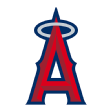 10. Jo Adell, OF, Los Angeles Angels
10. Jo Adell, OF, Los Angeles Angels
The biggest riser in the minors this year has to be Adell, the 10th pick in last year's draft who destroyed low-A pitching and has hit .314/.353/.597 since a quick promotion to high-A -- although he's understandably walking a lot less and still striking out about a quarter of the time.
He has huge raw power, but he has made a few modest tweaks to quiet his swing, like changing his back-elbow position and keeping his right knee in line so that he can get the barrel to the ball better, reducing his swing and miss. He could be a Mike Cameron power/speed center field type, or, if he really fills out, a right fielder with more power and less value on defense.
 11. Royce Lewis, SS, Minnesota Twins
11. Royce Lewis, SS, Minnesota Twins
Last year's draft looks pretty good so far, with three players already in the top 15 with about a year of pro data under their belts. Lewis went first overall and, like Adell, performed so well in low-A that he earned a promotion to high-A, in Lewis' case just the other day.
He's already off to a hot start for Fort Myers, and the instincts he showed as a high school player, especially as a baserunner, have already made the same impression on pro scouts. The main question he'll have to answer is about his position. There's still doubt he's a shortstop in the long run, although with his speed he could play anywhere. If he hits this way, it might not matter.
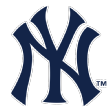 12. Justus Sheffield, LHP, New York Yankees
12. Justus Sheffield, LHP, New York Yankees
Sheffield wasn't at his best at the Futures Game but still fired off a few plus sliders and touched 95, giving up a homer when he left a fastball up to a right-handed hitter. His changeup -- his best offspeed pitch in high school -- has become more of a third weapon, one he'll need to recover to keep right-handed hitters honest, and he can still show you 40 command even on days when he's throwing strikes. He's very close to major league-ready, however, and has all the elements of a future No. 2 starter.
 13. Hunter Greene, RHP, Cincinnati Reds
13. Hunter Greene, RHP, Cincinnati Reds
If you saw the Futures Game on Sunday, you saw what Greene can do -- he sat 100-103 mph -- and why he's still very much a work in progress -- he threw mostly fastballs and gave up some very hard contact on them.
Greene won't turn 19 until next month, so the fact that he's pitching so well in the Midwest League now is a positive, but his curveball is still a below-average pitch, which I think he should ditch in favor of a slider, and he barely uses a changeup at all.
He's a superb athlete who throws that crazy velocity without substantial effort, so there seems to be no limit to his upside, but he's not close to a finished product just yet.
 14. Casey Mize, RHP, Detroit Tigers
14. Casey Mize, RHP, Detroit Tigers
The Tigers took Mize first overall in last month's Rule 4 draft, and the Auburn star has yet to make his pro debut, so this is entirely based on his profile coming out of the spring.
Mize would regularly pitch at 92-96 with a wipeout splitter and plus slider, and his command was excellent for a college junior. He has had minor arm issues in the past, but nothing serious since high school, and I don't think he carries any more risk than any other starter his age with a plus fastball.
He's a potential ace because of the combination of command/control and one or even two put-away pitches among his secondary offerings.
 15. Bo Bichette, SS, Toronto Blue Jays
15. Bo Bichette, SS, Toronto Blue Jays
If you think Bichette stays at shortstop, he's probably a tier low on this list, but I have seen him three times this year and still don't think he stays there. Instead, he's likely to slide over to second base, where he'll be no worse than average on defense while hitting for average with 15 or so homers, a zillion doubles and seeming to be in three places at once any time he's on the field. Also, he has plus hair.
 16. Brendan McKay, LHP/1B, Tampa Bay Rays
16. Brendan McKay, LHP/1B, Tampa Bay Rays
McKay continues to play as both a pitcher and position player, but the fourth pick in last year's draft has been so dominant on the mound that his performance might obviate a decision on his ultimate role.
McKay, currently rehabbing in the Gulf Coast League from a minor injury, is rocking a 71-7 strikeout-to-walk ratio in 50 pro innings this year, and while he hasn't been awful at the plate, he's just further behind in that part of his game, and won't be able to close that gap when he's in the lineup only three times a week.
If they make such a decision on his future, the Rays could see him in their rotation next year, a three-pitch starter with nothing truly plus but such good command that he's a probably a mid-rotation candidate.
 17. Wander Franco, SS, Tampa Bay Rays
17. Wander Franco, SS, Tampa Bay Rays
Franco signed last July 2 for $3.85 million, and the early returns are rather promising: The 17-year-old is in the advanced-rookie Appalachian League and hitting .386/.426/.683, with only eight strikeouts in his first 108 pro plate appearances.
Franco has lightning-quick hands and a great left-handed swing for hard contact with loft for power. As of this writing, he's tied for second in the Appy League in triples, fourth in homers and is third in slugging percentage, fourth in average and ninth in on-base percentage, even though he's one of only two 17-year-olds in the entire league.
He's probably not a shortstop in the long run, but if that's the case he'll end up at second. If you're looking for the next Vlad Jr. who's going to be in the No. 1 overall discussion and might see the majors before he turns 20, this is your guy.
 18. Kyle Wright, RHP, Atlanta Braves
18. Kyle Wright, RHP, Atlanta Braves
Wright was the No. 5 overall pick in last year's draft -- which means the top five selections are all in my top 18 right now -- and went right to Double-A to start this year, an aggressive assignment but one merited by Wright's plus slider and track record in the SEC.
He still works in the low to mid 90s and the slider is still his out pitch, although he's been a little wild and might benefit from moving up to work with a different regular catcher. He has some No. 2 starter ceiling, depending on how his command and control come along and whether his changeup becomes more than just a fringy third pitch. He also has a very high starter probability and proximity to that majors that boost his value.
 19. Brendan Rodgers, SS, Colorado Rockies
19. Brendan Rodgers, SS, Colorado Rockies
A scout at the Futures Game on Sunday described Rodgers as "quiet good": There's little flashy about his game, but he continues to produce, with a real breakout year in 2018 in his first season playing in a park that isn't extremely hitter friendly.
Rodgers has exploded with 17 homers already for Hartford, and ranks in the top 10 in the Eastern League in homers and doubles, while playing solid defense at shortstop, thanks primarily to a strong throwing arm and excellent hands. He's a 40 runner at best and I know multiple scouts who think his slowness and lack of agility will push him to second base, but he hasn't played himself off of shortstop yet.
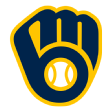 20. Keston Hiura, 2B, Milwaukee Brewers
20. Keston Hiura, 2B, Milwaukee Brewers
Hiura can hit and has a little bit of pop, none of which was really ever in question, with a .307/.370/.499 line so far this year between high-A and about five weeks in Double-A.
He has played a little more than half of his games so far at second base, and the remainder at designated hitter, as he recovers from an elbow injury that, before the 2017 draft, was widely expected to require Tommy John surgery. There isn't much arm strength there now and he's only fair at second, but if he continues to hit as he has at every stop so far it won't be a concern.
 21. Sixto Sanchez, RHP, Philadelphia Phillies
21. Sixto Sanchez, RHP, Philadelphia Phillies
Sanchez is Hunter Greene's doppelganger in many ways: He's very young, throws up to 100 mph as a starter with relative ease, and is in search of consistent, above-average secondary pitches. He has better present control than Greene does, and his fastball plays a little better in the zone. He's only a year older than Greene, which isn't really that important for pitchers like these two, but he is quite a bit smaller, just shy of 6 feet and easily under 200 pounds.
Even with those caveats, he's a high-ceiling prospect who could be a top-of-the-rotation type or a high-leverage reliever ... but he has been on the shelf since June 3 because of inflammation in his right elbow and has yet to make a rehab appearance. There's always the chance the injury is more serious, and even if it isn't, it probably will cost him 50 or so innings that he needed developmentally to work on his offspeed stuff.
 22. Touki Toussaint, RHP, Atlanta Braves
22. Touki Toussaint, RHP, Atlanta Braves
Toussaint is up to 95-96 with a hammer curveball, power slider in the upper 80s, and still plenty of upside left because he's a tremendous athlete with room left to fill out. His command has come a long way since he first signed as a wild but loose-armed prep pitcher in 2014, and while it's not average right now, I feel like the odds of him getting there are pretty high, given his athleticism and how far he's already come. At worst he's a fourth/fifth starter, with No. 2 upside.
 23. Adrian Morejon, LHP, San Diego Padres
23. Adrian Morejon, LHP, San Diego Padres
Morejon looks like a high-probability mid-rotation starter, working up to 97 mph with a power curveball and above-average changeup, who really needs to stay healthy so he can race to the majors. He's on the DL right now because of a hip injury, throwing well before that despite making most of his starts this year in hitters' parks.
 24. Mitch Keller, RHP, Pittsburgh Pirates
24. Mitch Keller, RHP, Pittsburgh Pirates
Keller hasn't progressed as much as I'd like this year; he's a two-pitch starter, still, with a plus fastball and plus (or maybe better) curveball, but no real changeup to speak of and increasing trouble with left-handed batters. If he finds that third pitch -- better feel for the changeup, maybe even a splitter -- he has No. 1 starter upside.
 25. Taylor Trammell, OF, Cincinnati Reds
25. Taylor Trammell, OF, Cincinnati Reds
One of the stars of this year's Futures Game, Trammell has made some strong adjustments to his setup and swing, getting his hands to the zone more quickly and showing incredible hand-eye coordination.
His approach is already above-average, and he showed he has some power right now, with more likely to come as he fills out. He's probably going to end up in left field, which does somewhat cap his likely ceiling.
 26. Luis Urias, 2B/SS, San Diego Padres
26. Luis Urias, 2B/SS, San Diego Padres
Urias has a tremendous approach, so while he might not ever see average power, he could end up with a 70 hit tool with high OBPs and plus defense at second base, along with the capability to fill in at shortstop as needed. He's one of the highest-floor players on the list.
 27. Willy Adames, SS, Tampa Bay Rays
27. Willy Adames, SS, Tampa Bay Rays
Adames barely qualifies for this list, as he didn't quite hit any of the rookie eligibility limits and was just optioned to the minors July 12 to make him eligible again. (Well, that's probably not why Tampa Bay optioned him ... I think.)
His time in the majors was disappointing but too small a sample about which to worry. He always has been a high-contact hitter with the promise of some future power, a potential star if he stays at shortstop, more likely an above-average regular somewhere else on the diamond, like third base.
 28. Triston McKenzie, RHP, Cleveland Indians
28. Triston McKenzie, RHP, Cleveland Indians
McKenzie missed the first two months of the season because of a forearm injury, then went to Double-A Akron, where he largely has picked up where he left off, working with average velocity, plus control and huge extension in his delivery that causes hitters to miss the fastball more than you'd expect. His stock is down a little right now given the time he missed and the fact that his physical projection still hasn't come to fruition yet.
 29. Ian Anderson, RHP, Atlanta Braves
29. Ian Anderson, RHP, Atlanta Braves
Anderson, the third overall pick in the 2016 draft, is just one inning shy of the career high he set last year as Atlanta continues to lengthen him out to be able to handle a full season's workload. He's been dominant of late, working from 88-95 with life up in the zone, showing two potentially plus secondary pitches in his breaking ball and changeup. Since May 1st, he's been rolling, with 84 strikeouts in 68 innings and a sub-2 ERA.
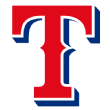 30. Leody Taveras, OF, Texas Rangers
30. Leody Taveras, OF, Texas Rangers
Taveras is still mostly just untapped potential at the plate, one of only two teenagers in the high-A Carolina League and hitting a mere .236/.309/.316 for the Down East Wood Ducks, albeit with a low strikeout rate for someone so young. He is tremendously tooled up, however, launching balls into the bleachers during batting practice before the Futures Game, and he's a plus defender in center already. He needs to show more of that power in games, and generally needs to show more production to maintain his value in the industry's eyes.
 31. Dylan Cease, RHP, Chicago White Sox
31. Dylan Cease, RHP, Chicago White Sox
The second player going to the South Side in the Jose Quintana trade, along with Jimenez, Cease is throwing the ball as well now as he has at any point since his 2014 Tommy John surgery. His fastball is sitting in the mid 90s, up to 98, with a plus curveball in the mid 80s that has to be one of the hardest (by velocity) in the minors. He's also easily on track to crack 100 innings for the first time as a pro, something he needs to show he can do to remain a starter.
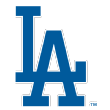 32. Alex Verdugo, OF, Los Angeles Dodgers
32. Alex Verdugo, OF, Los Angeles Dodgers
Verdugo is blocked in Los Angeles, which makes him seem like an ideal trade target for any club looking to strike a deal with the Dodgers, and he's at least holding up his end of the bargain with a .350/.394/.517 line in Triple-A. He's mostly playing center field for Oklahoma City but profiles as a right fielder between his size and his plus arm.
 33. Cristian Pache, OF, Atlanta Braves
33. Cristian Pache, OF, Atlanta Braves
Pache came into 2018 with zero professional home runs, but I wrote in January that I thought he'd develop 20-homer power. He's on his way, with eight already in the generally pitcher-friendly Florida State League, and he's still just 19 years old. He's also at least a 70 defender in center and I don't think the comparisons of his glove to that of Andruw Jones are totally unfounded.
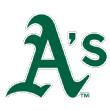 34. Jesus Luzardo, LHP, Oakland Athletics
34. Jesus Luzardo, LHP, Oakland Athletics
Luzardo came to Oakland in the Ryan Madson-Sean Doolittle deal last July and has blown up, in a good way, since the trade, reaching Double-A at age 20 this season, just two years after he was drafted out of high school while he was already rehabbing from Tommy John surgery. (So, to recap: He hit Double-A two years after graduating high school, and two years and a few months after Tommy John. This is impressive and you should be impressed.)
He's up to 97, sitting low to mid 90s, and flashes a plus to double-plus changeup, with very good control for someone so young. He is still in search of an average breaking ball, and there's some little stuff in the delivery that makes me wonder if he'll ever get to more than average command.
 35. Keibert Ruiz, C, Los Angeles Dodgers
35. Keibert Ruiz, C, Los Angeles Dodgers
The Dodgers are one of the only teams in baseball with a bona fide surfeit of catching prospects, as Will Smith looks like at least a big league backup, so they pushed Ruiz up to Double-A Tulsa as a 19-year-old (he turns 20 on Friday).
Ruiz is a switch-hitter with feel to hit and raw power from both sides already, while behind the plate he's a bit limited by an average arm and has a long way to go on the softer parts of the position. If he becomes a no-doubt catcher, he's a top-20 prospect, and if not, he'll still hit enough to be valuable somewhere else.
 36. Luis Robert, OF, Chicago White Sox
36. Luis Robert, OF, Chicago White Sox
Robert injured his wrist in spring training, came back for 87 plate appearances at two levels of A-ball, and re-aggravated the injury, effectively ending his season. He'll turn 21 next month, but we have very little data from him against real pitching, so he's ranked here largely on his tools and the fact that he did fairly well in the limited playing time we saw.
 37. Carson Kelly, C, St. Louis Cardinals
37. Carson Kelly, C, St. Louis Cardinals
I think Kelly could be Jason Kendall without the steals. He's definitely a big league catcher, now, more than just a backup, and still could improve behind the plate since he has been playing there only since 2014. He's just blocked by not-future Hall of Famer Yadier Molina.
 38. Chris Paddack, RHP, San Diego Padres
38. Chris Paddack, RHP, San Diego Padres
Paddack was the return for Fernando Rodney in 2016, blew out his elbow almost immediately, and has come back very strong, working up to 96 regularly with a grade-70 changeup and a 45-at-best curveball while making up for the lack of a great third pitch with plus control and an extremely competitive approach.
 39. Peter Lambert, RHP, Colorado Rockies
39. Peter Lambert, RHP, Colorado Rockies
Lambert is a super competitor who fills the strike zone with four pitches, touching 4s and 5s but sitting in the low 90s, still showing some projection left to see his stuff improve but succeeding in double-A Hartford this year even with a lot of average offerings. He's in Triple-A Albuquerque, one of the worst pitcher's parks in organized baseball, right now, and has struggled with contact in his two outings there - but that park and division are unkind to nearly all pitchers. Since a three-walk outing on April 14th, he has walked eight batters in total in 94.1 innings
 40. A.J. Puk, LHP, Oakland Athletics
40. A.J. Puk, LHP, Oakland Athletics
Puk was a top-15 prospect coming into the year, and seemed he'd probably spend most of 2018 in Oakland's rotation after a tremendous showing in early March and a quantum leap in his command since he'd signed out of Florida ... and then his elbow cried uncle and his season was over. He should be back early to mid 2019, and the ranking here reflects what he should be, with the risk of all Tommy John guys that they don't come back or come back with reduced stuff.
 41. Brent Honeywell, RHP, Tampa Bay Rays
41. Brent Honeywell, RHP, Tampa Bay Rays
Everything I just wrote on Puk applies here, although Honeywell's improvement in command was more of a gradual one. He should be back next spring as well.
 42. Ke'Bryan Hayes, 3B, Pittsburgh Pirates
42. Ke'Bryan Hayes, 3B, Pittsburgh Pirates
A 70 defender at third with excellent bat-to-ball skills and, for now, some sneaky 12-15 homer power, although I retain some belief that he'll grow into more and has the swing already to produce it.
 43. Carter Kieboom, SS, Washington Nationals
43. Carter Kieboom, SS, Washington Nationals
Kieboom has a great approach at the plate and excellent hand-eye coordination. He's very likely to hit for average and get on base, with fringy power as it stands now.
He's not a shortstop, and his arm probably will limit him to second base, but he should hit enough there to be a 55, which is an above-average regular.
 44. Bryse Wilson, RHP, Atlanta Braves
44. Bryse Wilson, RHP, Atlanta Braves
Atlanta's fourth-round pick from 2016 continues to impress, moving up to Double-A early this year at age 20 and continuing to miss bats and throw strikes, working 91-97 with heavy life and an above-average slider. He's made 13 starts for double-A Mississippi, and while his ERA is high, it seems like it's just bad luck, as his peripherals are all strong.
 45. Matthew Liberatore, LHP, Tampa Bay Rays
45. Matthew Liberatore, LHP, Tampa Bay Rays
Liberatore was No. 3 on my draft board -- No. 2, Carter Stewart, didn't sign with Atlanta, and the rumor is that he's heading to junior college to enter next year's draft as its top pitching prospect -- but fell to the Rays at pick No. 16.
He's a projectable lefty with a good delivery, a fastball that has touched 97 but sits in the 90-94 range, and feel already for a curveball and changeup.
 46. Jarred Kelenic, OF, New York Mets
46. Jarred Kelenic, OF, New York Mets
Kelenic was sixth on my board for the draft last month and was the sixth overall pick, as well as the first high school player selected after a run of five college players to start the draft (one pitcher, four hitters). Kelenic has the kind of tools to go up top in any draft, but he was a little older than most high school seniors, turning 19 this past Monday, and came from Wisconsin, so he wasn't scouted against good pitching at all this spring.
The very early returns are positive; he went 19-for-46 in the GCL and was bumped right up to the Appy League, where he's still making a ton of contact. The fact that he hasn't been overmatched against pro pitching while hitting with a wood bat is very promising.
 47. Alex Kirilloff, OF, Minnesota Twins
47. Alex Kirilloff, OF, Minnesota Twins
Kirilloff missed all of last year after Tommy John surgery, but he hasn't shown any rust this season, with a .607 slugging percentage that was second in the Midwest League behind a college product. Promoted to high-A a few weeks ago, he has continued to hit with a strong contact rate and above-average power.
He's playing mostly right field and that should be his long-term home, with the kind of big hit/power upside that could make him a No. 4 or No. 5 hitter in a good lineup.
 48. JoJo Romero, LHP, Philadelphia Phillies
48. JoJo Romero, LHP, Philadelphia Phillies
Romero has spent the year with Double-A Reading, an unusually homer-friendly park for the Eastern League, and has pitched and performed better as the season has gone along, hitting 97 in at least one recent start and mixing in two- and four-seamers as well as an above-average changeup and power curveball.
He's at least a fourth starter, probably a three, and I wonder if he needs the challenge of better competition to pitch more consistently with his best stuff.
 49. Yusniel Diaz, OF, Baltimore Orioles
49. Yusniel Diaz, OF, Baltimore Orioles
Diaz hit two bombs in Sunday's Futures Game, a testament to the fact that he's healthy now and has really bulked up, adding what looks like at least 15 pounds of muscle. He walked more than he struck out as a 21-year-old in Double-A Tulsa before being sent to the the Orioles' system in Wednesday's Manny Machado trade.
He should never be allowed to steal another base (he's 8-for-16 this year ,which raised his career success rate to 44 percent), and is much more likely to end up in a corner than to remain in center, so his ceiling is probably a good regular unless this power becomes a more permanent part of his game.
 50. Dustin May, RHP, Los Angeles Dodgers
50. Dustin May, RHP, Los Angeles Dodgers
May was the Dodgers' third-round pick in 2016, an athletic right-hander from a Texas high school who showed arm strength and some feel to spin the ball but was generally raw and had some effort in the delivery.
He has come a long way since then; he's now regularly hitting 96-98 with sink and with a hard curveball that's already plus, and he's a strike-thrower who hasn't walked more than two batters in any start this season.
He's pitching half his games in a good hitter's park in Rancho Cucamonga, and he's still third in the league in ERA. He looks like an above-average starter, and at 20 he still has time to improve on that.
Honorable mentions -- players I considered and/or who were suggested to me by scouts and executives I consulted on this list: Michel Baez, RHP, San Diego (that's your No. 51, the rest are not in order); Brusdar Graterol, RHP, Minnesota; Nick Gordon, 2B, Minnesota; Travis Swaggerty, OF, Pittsburgh; Alec Bohm, 3B, Philadelphia; Nolan Jones, 3B, Cleveland; Luiz Gohara, LHP, Atlanta; Justin Dunn, RHP, New York Mets; Anthony Alford, OF, Toronto; Beau Burrows, RHP, Detroit; Micker Adolfo, OF, Chicago White Sox; Shane Baz, RHP, Pittsburgh; D.L. Hall, lhp, Baltimore.
